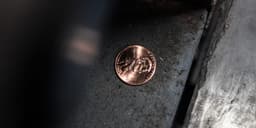Home / Business and Economy / US Races to Break China's Rare-Earth Dominance
US Races to Break China's Rare-Earth Dominance
16 Nov
Summary
- US Treasury Secretary proclaims first US-made rare-earth magnet in 25 years
- US efforts to reduce dependence on Chinese rare-earth production could take years
- China controls 70% of global rare-earth mining and over 90% of global processing

As of November 16, 2025, the White House has made it a top priority to return the rare-earth industry to US shores. Last week, US Treasury Secretary Scott Bessent returned from South Carolina brandishing a small piece of metal, proclaiming it was the first rare-earth magnet made in the US in a quarter of a century. Bessent touted this as proof that the US is ending "China's chokehold on our supply chain" and that the country is "finally becoming independent again" thanks to a new rare-earth mineral processing center in South Carolina.
Breaking China's dominance in rare-earth processing and manufacturing, which are essential for semiconductors, batteries, and armaments, is a key goal for the Trump administration. However, experts warn that the US's efforts to reduce its dependence on Chinese rare-earth production could take years to bear fruit. China currently controls around 70% of global rare-earth mining and over 90% of global processing capacity, giving it a significant head start that will be difficult for the US to erode.
The US imported 80% of the rare earths it used in 2024, and for some critical minerals like dysprosium and samarium, China's refinement dominance rises to 99%. These rare-earth elements are crucial for electric vehicles, wind turbines, and defense applications. The US has taken steps to bolster domestic production, including the Pentagon becoming the largest shareholder in the California-based MP Materials mine, but it will struggle to achieve self-reliance in the short term.




